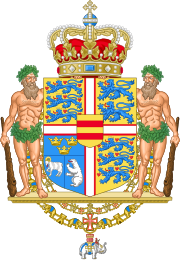 |
|---|
| Part of a series on |
| Social democracy |
|---|
 |

Healthcare in Denmark is largely provided by the local governments of the five regions, with coordination and regulation by central government, while nursing homes, home care, and school health services are the responsibility of the 98 municipalities. Some specialised hospital services are managed centrally.
Danish government healthcare expenditures amount to approximately 10.4% of the GDP, of which around 84% is funded from regional and municipal taxation redistributed by the central government. Because necessary healthcare is taxpayer-funded, personal expenses are minimal and usually associated with copayments for certain services. Those expenses are usually covered by private health insurance.
Use of electronic health records is widespread, and efforts are underway to integrate these at the regional level.
For every 1,000 people in Denmark, there are about 3.4 doctors and 2.5 hospital beds. Spending on hospital facilities, at 43% of total health care spending, is above the average for OECD countries, even though the number of beds has decreased considerably. Child vaccination coverage is over 90%. Mortality from heart disease decreased in the years up to 2015, while life expectancy increased.